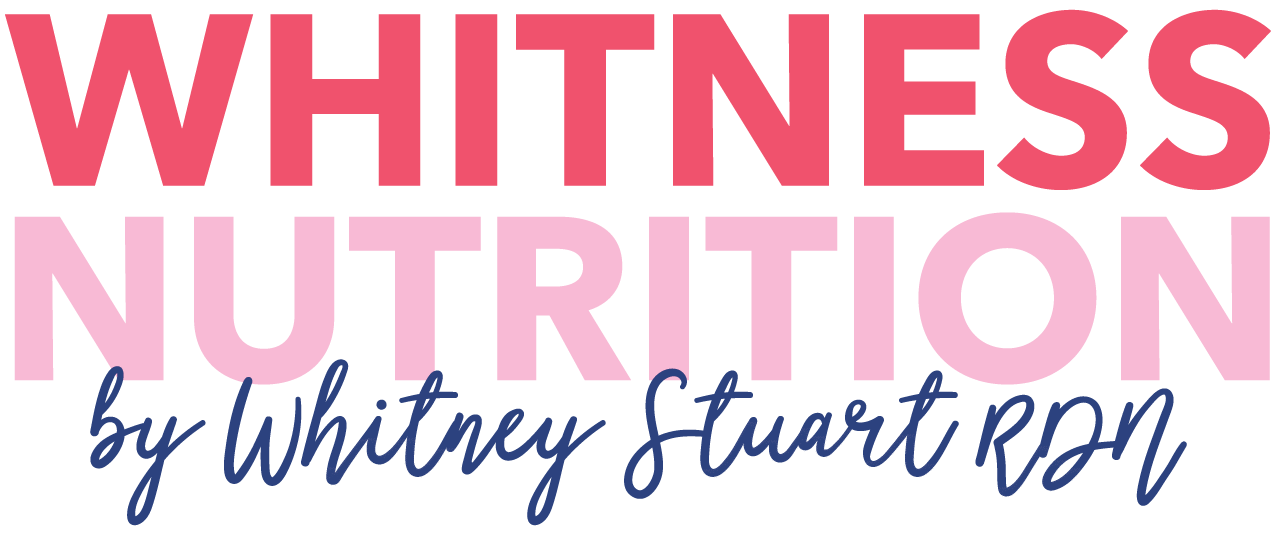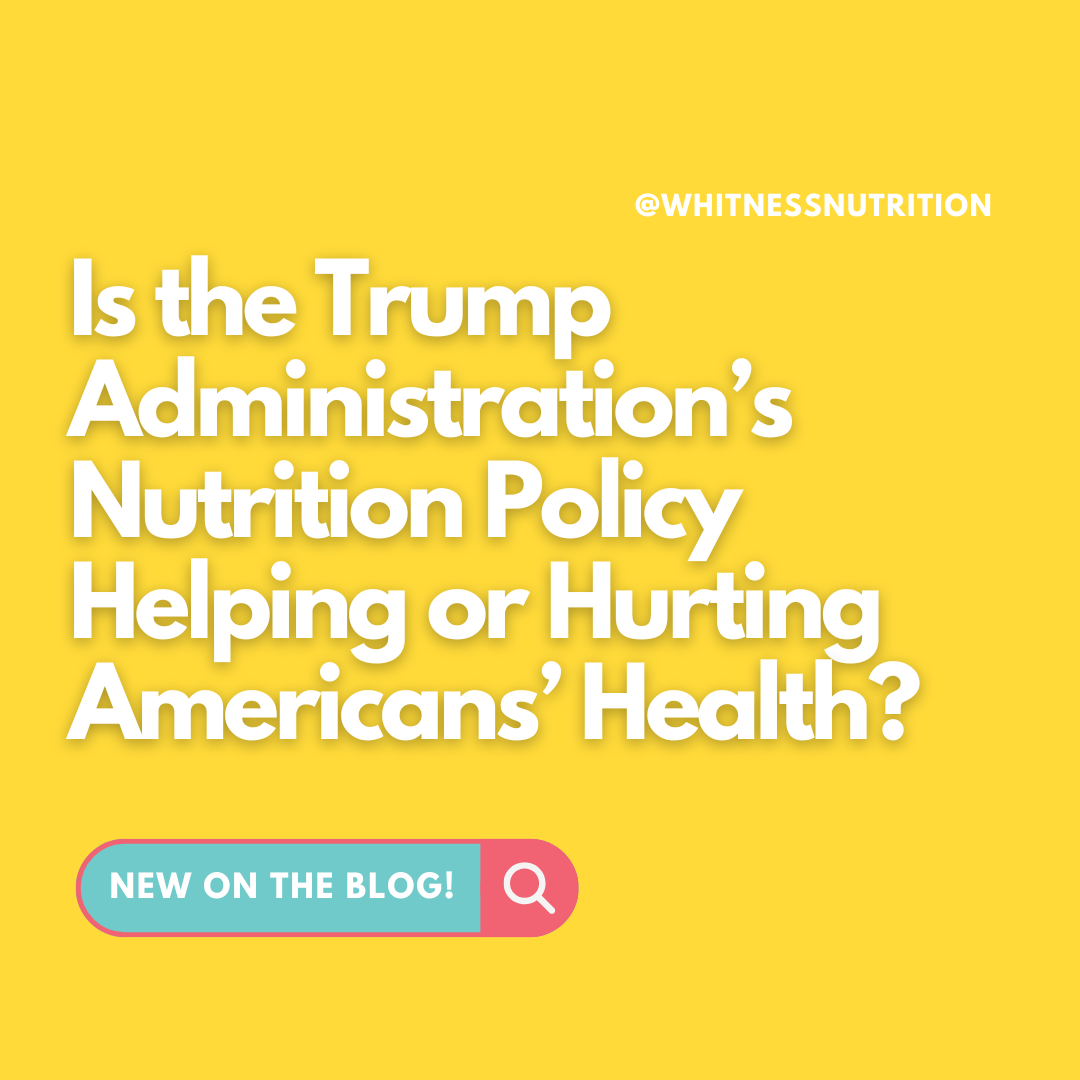Is the Trump Administration’s Nutrition Policy Helping or Hurting Americans’ Health?
As a dietitian, my focus is always on evidence-based strategies that support public health. Nutrition policies shape the food system, access to healthy meals, and public health initiatives that can either improve or hinder long-term well-being. With the return of President Trump to the White House in 2025, several changes to federal nutrition programs, food assistance funding, and public health initiatives have already been enacted. But are these changes benefiting Americans’ health? Let’s break it down.
Is the Trump Administration’s Nutrition Policy Helping or Hurting Americans’ Health?
Rollbacks on School Nutrition Standards
One of the most debated changes is the rollback of school nutrition standards established under the Healthy, Hunger-Free Kids Act of 2010. These new regulations:
- Delay sodium reduction targets.
- Allow exemptions from whole grain requirements.
- Reintroduce flavored low-fat milk in schools.
While flexibility in food programs can be helpful, research consistently shows that excessive sodium intake and refined grains contribute to chronic diseases like hypertension and obesity—conditions already affecting children at alarming rates.
Cuts to Food Assistance Programs
Federal nutrition assistance programs have faced significant funding reductions, including over $1 billion in cuts to The Emergency Food Assistance Program (TEFAP) and the elimination of the Local Food Purchase Assistance (LFPA) program. These programs are crucial for low-income individuals to access fresh, nutritious food.
The Emergency Food Assistance Program (TEFAP)
TEFAP provides USDA-purchased commodities to low-income Americans through food banks, pantries, and meal programs. The recent $1 billion funding cut means:
- Food banks will receive fewer staple items like fruits, vegetables, dairy, and proteins.
- Increased strain on food banks as demand rises while supplies decrease.
- Greater risk of food insecurity for families, seniors, and individuals who rely on TEFAP.
Local Food Purchase Assistance (LFPA) Program
This program has been eliminated. The LFPA program, a pandemic-era initiative, provided grants to purchase locally grown foods, benefiting small farmers and low-income communities. Its elimination means:
- Food banks lose a key source of fresh, locally sourced food.
- Small and mid-sized farmers lose a valuable revenue stream.
- Communities have reduced access to nutritious, culturally appropriate foods.
Impact on Food Banks & Low-Income Communities
Food banks across the country are already reporting:
- Longer lines and higher demand due to rising grocery costs and decreased federal assistance.
- Less fresh, nutrient-dense food available for distribution.
- Increased pressure on local donations and state funding to fill the gap.
Dismantling Federal Oversight in Nutrition
The administration has announced plans to dissolve the Department of Education, transferring oversight of school meal programs and other nutrition initiatives to the Department of Health and Human Services (HHS). While consolidation can sometimes improve efficiency, concerns remain about whether this shift will prioritize school nutrition programs.
Reduction in Health Research Funding
Drastic cuts to the National Institutes of Health (NIH) have resulted in the termination of clinical trials focused on HIV prevention, mental health, and maternal nutrition. This impacts:
1. HIV Prevention Research
- Halting of clinical trials exploring nutrition’s role in immune function and HIV prevention.
- Reduced funding for new dietary interventions supporting treatment efficacy.
2. Mental Health & Nutrition
- Research into the gut-brain connection, micronutrient deficiencies, and their impact on mental health is at risk.
- Studies on omega-3s, probiotics, and diet interventions for depression and anxiety are being cut short.
3. Maternal Nutrition & Infant Health
- Funding reductions for prenatal nutrition research affecting childhood development.
- Canceled clinical trials focused on gestational diabetes, folate, choline, and maternal micronutrient needs.
The Bigger Picture: A Step Forward or Backward?
Supporters of these policy changes argue that deregulation and budget reductions reduce government overreach and allow for personal freedom in food choices. However, the impact on public health, food access, and research funding raises concerns about worsening health disparities and chronic disease rates.
I hope that this provides a summary of the unbiased changes happening in 2025 so that you can decide for yourself what changes are helpful and which aren’t. If there’s new changes I missed, please leave a comment below! Knowledge is power and I’m learning along the way with you.
References
- NIH Funding Reductions
- Supplemental Nutrition Assistance Program (SNAP) Overhaul
- Medicaid and SNAP Funding Cuts
- Budgetary Measures to Eliminate Wasteful Spending
Visit the blog for more.




